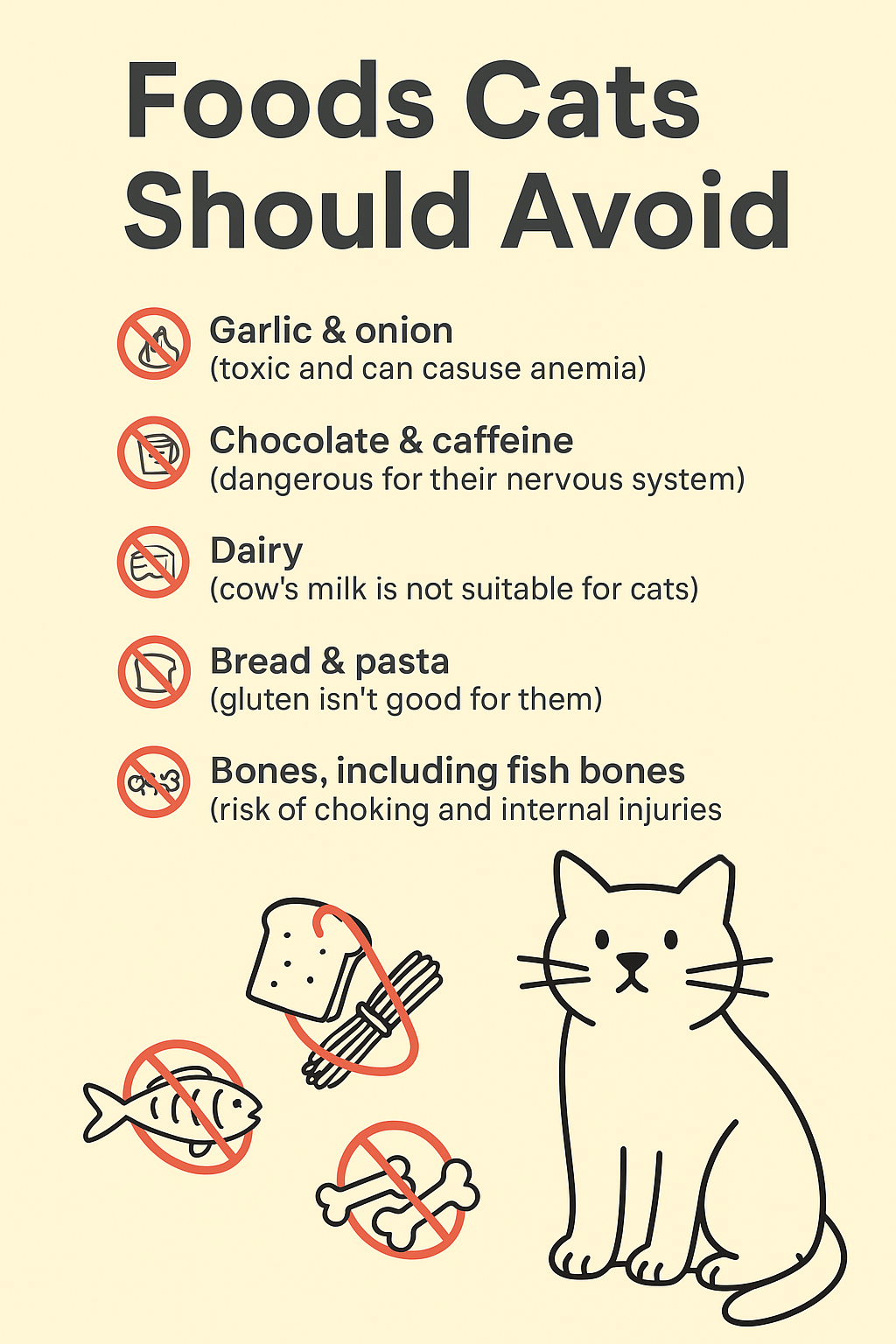What Should (and Shouldn’t) Go in a Cat’s Bowl?
On the islands of Paros and Antiparos, we often come across cat bowls filled with things like pasta, fish bones, bread, and even raw meat. While it's done with good intentions, this kind of feeding can seriously harm stray cats.
In the past, before pet food was easy to find, people fed cats whatever was available. But we now know that cats have very specific dietary needs—and many human foods can make them sick.
✅ The Best & Safest Option
The best and safest way to feed stray cats is with dry cat food. It’s nutritionally balanced, safe, and widely available in most mini markets and supermarkets across Greece.
If you’re putting out food, try to place it:
In the shade, so it stays fresh
In a safe, quiet spot away from busy roads
On public land like a sidewalk, park, or open area (avoid placing bowls outside private properties like restaurants, hotels, or Airbnbs—unless the owner has given permission)
⚠️ Why Leftovers Can Be Dangerous
Feeding cats leftovers, especially bones, pasta, or raw meat, can lead to:
Choking or internal injuries
Food poisoning from spoiled or contaminated food
Long-term health issues like liver and kidney problems
If You Must Feed Scraps…
Only offer small amounts of plain, cooked meat—with no sauces, spices, oils, or bones.
🚫 Foods Cats Should Avoid:
Garlic & onion (toxic and can cause anemia)
Chocolate & caffeine (dangerous for their nervous system)
Dairy (most cats are lactose intolerant)
Bread & pasta (gluten isn’t good for them)
Bones, including fish bones (risk of choking and internal injuries)
Raw meat & fish (can carry harmful bacteria and parasites)
🥛 Why Dairy Isn’t Great for Cats
Most adult cats are lactose intolerant
After weaning, cats naturally produce less lactase—the enzyme needed to digest lactose (the sugar in milk). Without enough lactase, consuming dairy can lead to diarrhea, stomach cramps, gas, and bloating.Cow’s milk is made for calves, not cats
Cows are much larger animals than cats. Their milk is rich in fat and protein designed to help baby cows grow quickly. For cats, this nutrient balance is too heavy and can cause digestive upset, weight gain, and even pancreatitis over time.Cheese is concentrated milk
Cheese might seem like a small treat, but it’s very dense in fat and sodium, which can strain a cat’s kidneys and liver, especially in older cats. Plus, it’s still a dairy product, so the lactose problem remains for many cats.
🧀 Bottom line:
Even if a cat likes milk or cheese (and many do!), it doesn’t mean it’s good for them. Think of it like candy for humans—it tastes good, but it can cause problems in the long run.
If you want to treat a cat, opt for a cat-specific snack or a small amount of plain, cooked meat instead.
Let me know if you'd like this added to the blog or turned into a visual too!
Let’s all do our part to keep stray cats healthy and safe.
Thank you for feeding them the right way! 🐾💙



